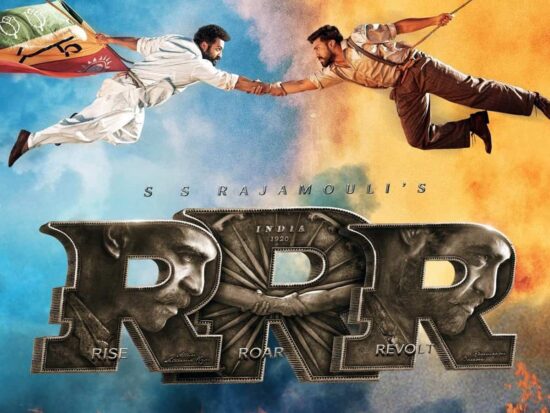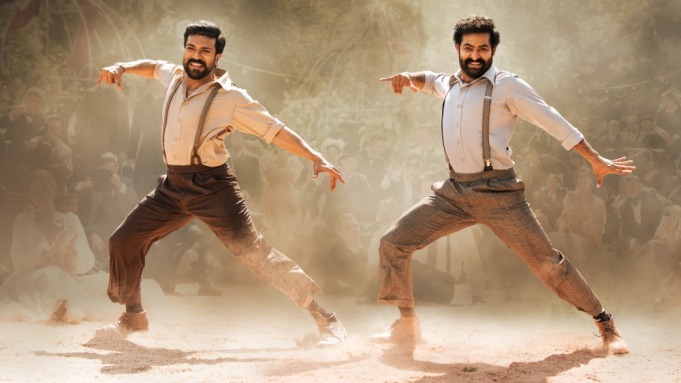
This breathtaking blockbuster from South Asia is inspired by real Indian revolutionaries, although it takes abounding artistic license to convey a bombastically spectacularised hyperbole.
RRR — that stands for “Rise, Roar, Revolt” — was produced in Tollywood, the part of Indian cinema that caters to the Telugu language. This is the main language used in Andhra Pradesh and Telangana. The capital of the latter is Hyderabad, where Tollywood is based, providing a cinematic production that differs from the Mumbai-based Bollywood.
The ode to this type of Indian filmmaking can further be analysed in the acronym title that could easily stand for the initials of the leading actors (both from families with deep roots in Tollywood) and the Telgu director: “Rama Rao, Ram Charan and Rajamouli.
”
The three-hour motion picture is an epic bromance set in the twenties, during the peak of British colonial power. Alluri Sitarama Raju (Ram Charan) and Komaram Bheem (N. T. Rama Rao Jr.), confront an extremely vile colonial governor (Ray Stevenson) and an even more detestable wife (Alison Doody), to liberate a kidnapped child.
Only Jenny (Olivia Morris) shows a more sympathetic side of the despicable English intruders. She develops an affection for Bheem and treats all Indians as equals, strongly contrasting the despotism of all the British characters in the film.

Director S. S. Rajamouli does not shy-away from grandeur: RRR is a whirlwind of CGI action that bends the laws of physics and reality itself. Bodies fly through the air as we witness monumental explosions, spurting blood, and hand-to-hand combats with ferocious wild animals and sanguinary men. Spectators will feel as if they were plunged into a video game. Therefore it doesn’t come as a surprise that the Indian director recently visited Kojima Productions and will appear in Hideo Kojima’s next game.
The stunts and special effects in RRR are astounding as reality goes out the window in favour of the Rajamouli’s flight of fancy, as he allows his characters to chase rainbows in the most mind-gobbling manner. The heroes ride horses, motorbikes, they jump off buildings as parkour athletes, and with equal grace they perform intricate musical choreographies. The very score becomes an emblem of the themes portrayed in the film. Thus, the Naatu Naatu song, composed by M. M. Keeravani, epitomises the spirit of retaliation through enthralling mood-lifting beats.

The larger than life scenes follow one another relentlessly and reach their climax without taking themselves too seriously, actually there is a lot of self-irony within the action grandiosity. Whether it is fast-paced or in slow motion, the style is superlative as it seems to homage the work by John Woo. But besides the visual entertainment, RRR is effective as an epic of a friendship that triumphs over adversity, with well-defined villains and extremely charming and charismatic heroes. The film exaggerates in all possible ways and that is the trait that makes it so appealing, with its phantasmagorical pageantry.
The scenario of pre-independence India in a purely fictitious era is used to convey a universal message against invaders, that is enhanced with the stereotyped depiction of the British colonists. In this way RRR comes across as a political work that criticises racism and oppression. Just like Hollywood is currently trying to make amends for its history of violence, Rajamouli’s film seeks to look back at India’s oppression to bestow a lesson for our current epoch. The heightened visual rhetoric serves as satirical propaganda denouncing the horrors of humanity, turning history into a parable that can help us find solutions to current cultural chauvinism.
Final Grade: A

